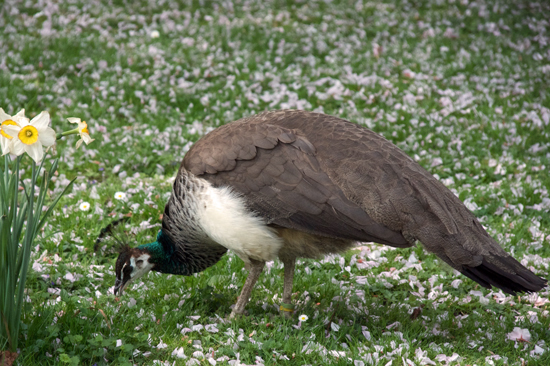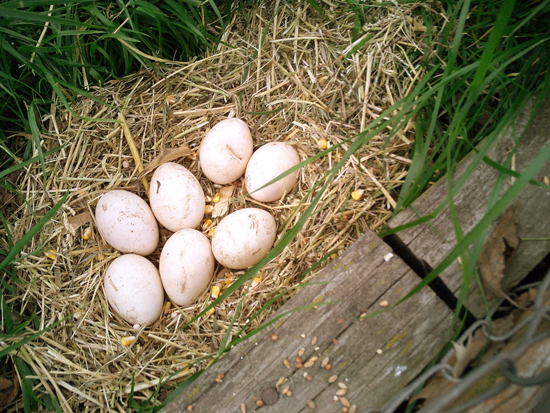National Symbols: National Bird
Indian Peafowl (common name)
Pavo cristate (scientific name)
Designation
Official
Classification
- Kingdom: Animalia
- Phylum: Chordata
- Class: Aves
- Order: Galliformes
- Family: Phasianidae
- Genus: Pavo
- Species: P. cristate
The Bird
The Indian peafowl, or blue peacock, is a large bird in the pheasant family about the size of a goose. Indigenous to India, the peafowl is found throughout the Indian subcontinent, and it has been introduced to many countries around the world. Males measure approximately 200 centimeters (78 in) in length, including their full breeding plumage, and weigh some 5 kilograms (11 lb). The female, called a peahen, is smaller than the male at approximately 86 centimeters (34 in) long and weighs about 3.4 kilograms (7.5 lb).
The male peafowl, called a peacock, has a head crest of fan-shaped feathers, a white patch under its eyes, a long, slender, bright blue neck, and iridescent bluish-green body feathers. The bird's signature feature is an elaborate, colorful plume of vibrant, bluish-green tail feathers, each of which is marked at the tip with an “eye.” The tail feathers drag behind the bird and can be twice as long as the peacock's body. When wooing a female, the male fans out and vibrates this fantastic plumage. Females exhibit a brownish-gray and green color and have no long train of feathers.
The peacock is known for its distinctive loud, piercing cry which can be heard from a long distance. The species inhabits grassland, scrub, and forest areas where it feeds on seeds, insects, fruit, and small reptiles. Peacocks nest in shallow ground nests of sticks and other vegetation, and the female lays 4–8 buff-colored eggs, which she alone incubates for about 28 days. Once hatched, the chicks often ride on their mother's back, or, if threatened, the female may fly with the chicks to a safe spot about the ground.
The Significance
These brilliant birds have deep religious and cultural significance to India's Hindus, Muslims, Jains, Buddhists, and Christians, a commonality that emphasizes the country’s commitment to religious diversity and tolerance. In Hindu mythology in particular, the pheasant holds an extremely important place. It appears in all the ancient Vedic literature as the son of Garuda, given to Karthikeya to fight a demon, as the vahana (vehicle) of Karthikeya and Lord Murugan, and as a symbol of Indra, the god of thunder, rain, and war. In fact, Indra is said to have blessed the peacock, which was just a plain bird, with “one thousand eyes” in exchange for its bravery.
The male's long and beautiful tail feathers have been popular in fashion and design and have been depicted in many works of art. According to local belief, the male's fanned tail can signal approaching rain. The bird’s unique dance when displaying its tail feathers partially inspired the national dance form Bharat Natyam, and the pitch of its call has been incorporated into the notes of classical Indian music. While the birds were once bred for food, peacock hunting is banned under the Indian Wildlife Protection Act of 1972.
Copyright © 1993—2025 World Trade Press. All rights reserved.

 India
India 
